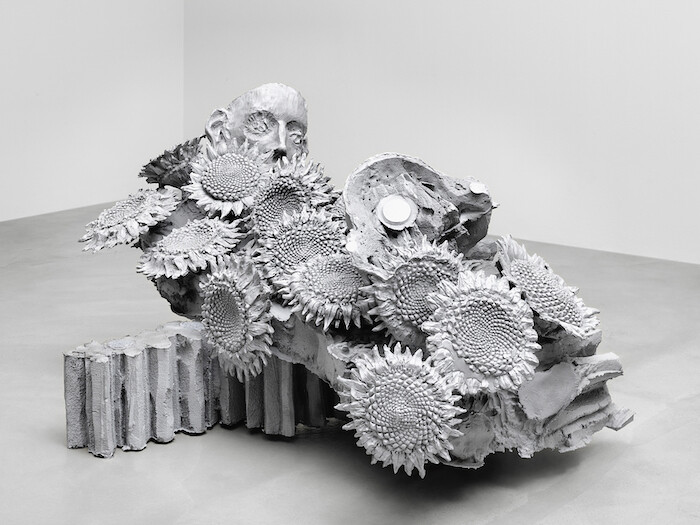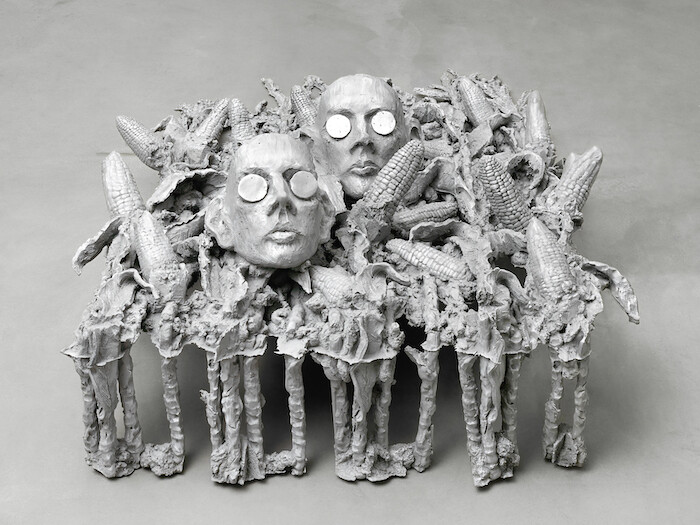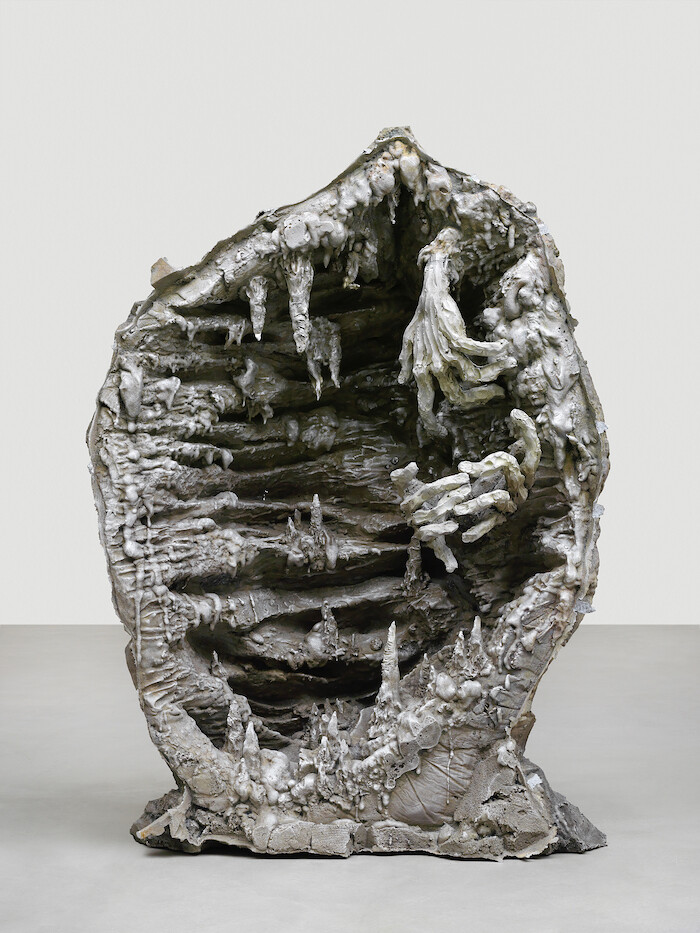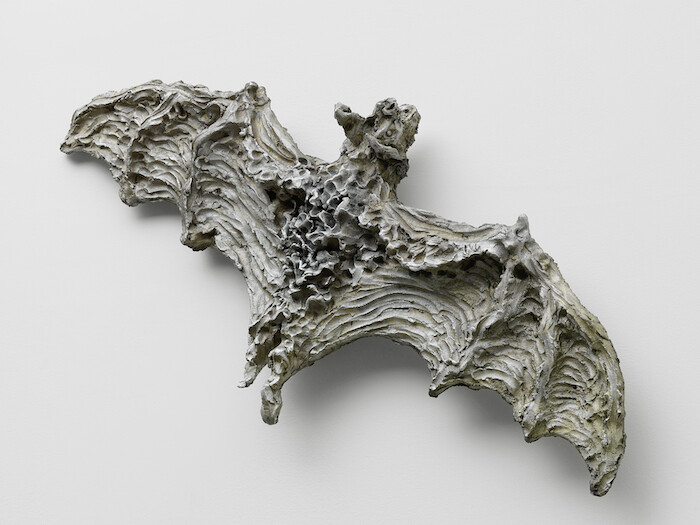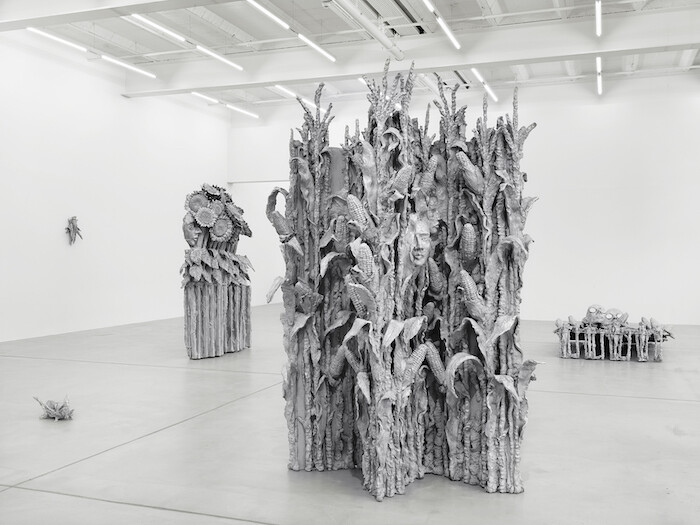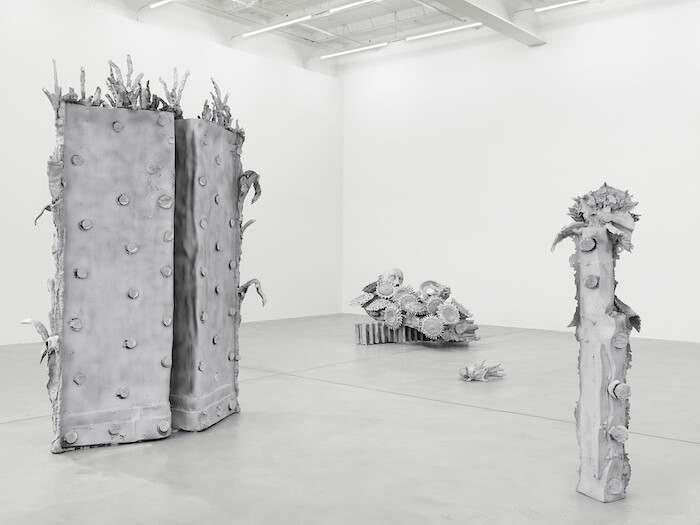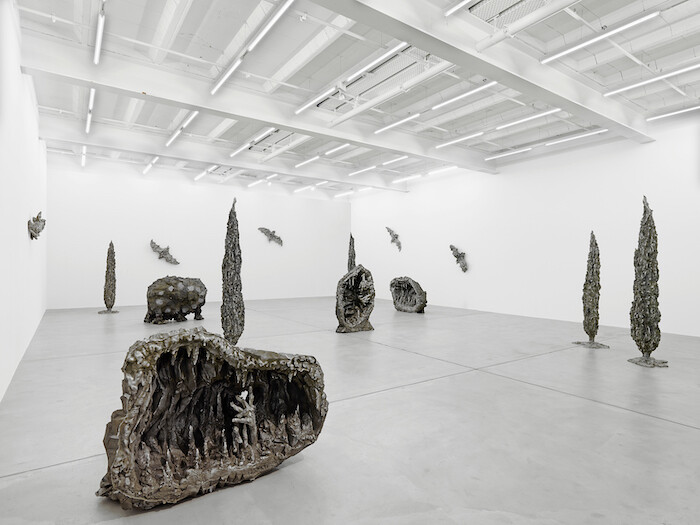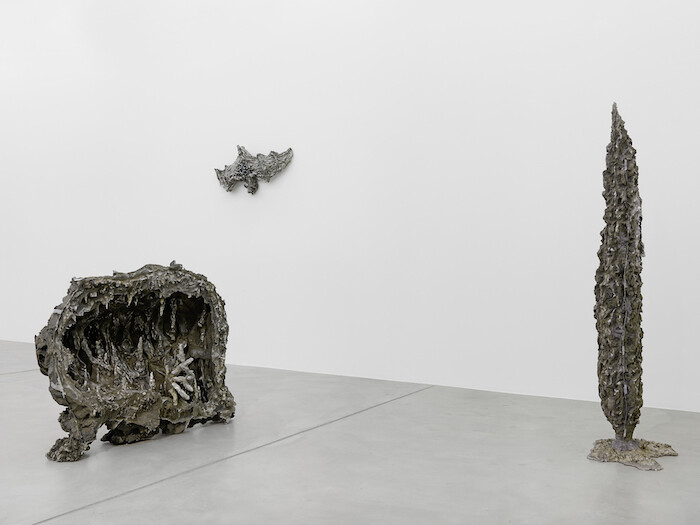The show is called “November”; I write as the month draws to a close. It’s cold and slightly damp, albeit not enough to offset the long, dry summer and autumn. But the apples sold at the market are still crisp, the Raebeliechtliumzug—an annual walk through the dark, originating in harvest festival celebrations, in which children sing songs and carry lanterns carved out of turnips—took place last week, and now we’re getting ready for Christmas. To everything there is a season. Jean-Marie Appriou illustrates this circle of life in two chapters. In the first gallery are sunflowers in full bloom and thick fields of corn; the second features a collection of waist-high caves, tall dark cypress trees, and bats flying around the viewers’ heads.
All the sculptures were made this year, cast in aluminum from clay models formed by traditional tools and the artist’s gouging fingers, which have left deep, irregular, tactile indentations. The aluminum varies from silvery to blackened. The works are striking, like the two-and-a-half metres-tall corn thicket Crossing the parallel worlds; the faces and limbs that appear elsewhere are spindly, verging on grotesque. It is hard to gauge this aesthetic, which is unfamiliar in a contemporary art context—as is the heavily symbolic figurative narration—but feels well-worn. Faces, such as the globes on either side of a cluster of sunflowers entitled The race of the sun and the moon, fit somewhere between an Alberto Giacometti sculpture and a carnival mask. The breath of the suns has two faces tilted upward on a bed of corn ears, coins over their eyes as if they are laid out corpses, though when the arrangement gleams in the light these could be sunglasses. Either way, with their eyes obscured, the faces muted.
Four shell-like forms—collectively titled “The cave of time” and individuated by the adjectives romantique, tectonique, mythologique, and mystique—are presented on the floor of the second gallery, gaping openings in which stalactites and stalagmites cluster, with gnarled hands inside clasped ready for prayer. Thin trees tower over them and the viewer while bats dive-bomb or soar on the walls. If this is the dark side, the chthonic, it is no more disconcerting than the light, where single locusts perch on the walls and floor, watching and waiting with ominous titles such as Plague and Cloud, and the portentous heads are tucked in among the abundant foliage.
All this, however, is only half the story. As well as conjuring a fictional environment, Appriou’s works advertise the industrial scale and technology of their fabrication, even though most are unique pieces. The largest sculptures, exhibited in the middle of the space, have one image façade and one contrasting back view that reveals how they have been assembled. The race…, for example, is cast in two large sections, these dotted at regular intervals from the casting, making the ensemble look like blocks of florist’s foam. To one side are the artist’s fingerprints; on the other are the marks of the foundry. Highlighting the manufacturing process celebrates the transformative inherent in casting, but it also tests how far the artist can push the work’s aura, if the notion even retains any credibility.
On the fictional register, “November” brings together subjects that speak of seasonality and its implications of growth, harvest, dying back, and subsequent new life. What happens on an annual rotation reflects the scheme of human life, with known life and unknown death. The works chime with cultural traditions—think of passion plays or carnival—in which religious and agricultural cycles are inextricably interwoven, yet toy with kitsch subjects such as sunflowers. Appriou’s figures and symbols tend toward the popular, clichéd, and low-brow—evergreen imagery that he re-vivifies, though not with enough conviction to return it to “high” art. (Not that his sculptures are without art-historical precedent—James Ensor’s dead-eyed, disconnected heads come to mind and Arnold Böcklin is cited as a reference in the press release.) There is condescension at work in this exhibition, but who is the butt of it? Is it viewers who catch themselves considering that cyclical life means lost innocence, who would forget modernity and attempt to return to some simpler past? Is it the viewer who seeks immediate escapism? Or is it the artist who identifies fully with their work, not pulling their punches as Appriou does? Looming large in this exhibition is the play-off between transitory subjects and the massive, igneous materiality of the aluminum—though presumably this too could be recycled.
